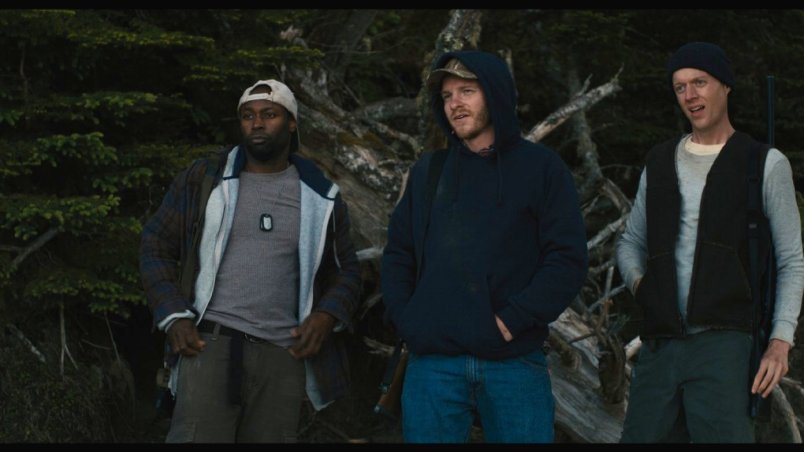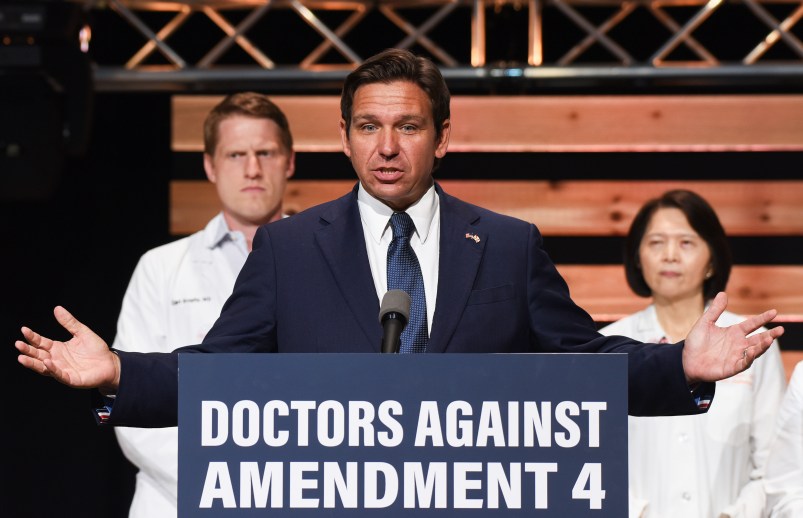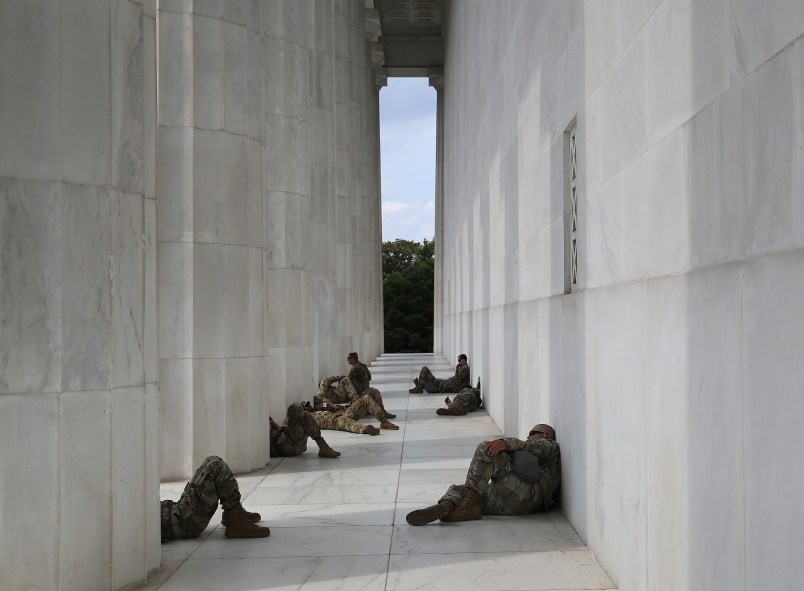It will probably be days, maybe weeks or even months before we know exactly what happened at Fort Hood that led Specialist Ivan Lopez to kill three people and himself on Wednesday. This much is confirmed: Lopez served four months in Iraq in 2011, and had been under evaluation for possible Traumatic Brain Injury and Post Traumatic Stress. In an information vacuum, this will undoubtedly be that prevailing narrative.
Vets know this all to well. Every time there is a mass shooting somewhere in America, we spend the moments until the shooter is identified repeating internally, “please, don’t be a veteran.” We do this because we’ve seen the story play out repeatedly, in Los Angeles, the Navy Yard, and previously at Fort Hood, to name a few. It’s a story that convinces Americans that veterans are all ticking time bombs, volatile and waiting for the last straw to set us on a murderous rampage.
This of course, is not true. There’s no conclusive evidence showing that veterans are any more likely to be violent than the general population. But in an era where less than one percent of Americans serve in the armed forces, our collective image of “the veteran” doesn’t come from empirical data. Rather, for most Americans who don’t know a combat vet, this image comes from pop culture. And pop culture has been especially irresponsible in its portrayal of veterans.
The FX series Justified is full of veteran characters. All but one (Deputy Marshal Tim Gutterson, played by Jacob Pitts) are villains, from the sociopath Boyd Crowder (Walton Goggins) to minor characters like the skinhead former boxer who savagely beats a retired Super Bowl champion in Season 2. Even Gutterson’s character solely revolves around his aptitude as a sniper. Similar to NCIS’s Agent Gibbs (Mark Harmon), or Steve McGarrett (Alex O’Loughlin) in CBS’ reboot of Hawaii Five-0, a veteran character is only stable so long as the Ticking Time Bomb Veteran can find a way to kill people within the bounds of the law.
We also find the trope in the FX series Sons of Anarchy. The opening episode of the series begins with Clay Morrow (Ron Perlman), clearly marked as a veteran by the U.S. Army Parachutist Badge he wears, supervising bribes, smuggling guns, and indifferently viewing the corpses of two undocumented employees who have been burned alive by a rival motorcycle gang. Later, in the same episode, we meet fellow gang-member Kip “Half-Sack” Epps (Johnny Lewis), a former Marine who gained his clever moniker by losing a testicle in Iraq. While Half-Sack may be less murderous than the rest of the gang, he holds his own among his ruthless contemporaries.
Interestingly enough, Lewis suffered from substance abuse and was arrested multiple times in 2011 and 2012 for assault, leading to his death in what is being investigated as a murder-suicide, for which he is the suspect. The veteran community awaits the rash of cable dramas about Ticking Time Bomb Actors that is surely on the horizon.
Lest we let feature films escape blame, there’s “In the Valley of Elah,” where it is implied that PTSD led three soldiers who have recently returned from Iraq to murder and dismember one of their comrades. Most far-fetched is the 2012 film “Black Rock,” where we find three post-9/11 veterans raping and stalking three young women before ultimately deciding to murder them “fucking haji-style, bro!”
This list of course isn’t exhaustive. Days could be spent naming irresponsible depictions of veterans (Justin Walker in Brothers & Sisters, John Triton in “The Marine,” Nicholas Brody in Homeland, Terry Bellefluer in True Blood, etc.)
We’re still far away from discovering a motive in this week’s Fort Hood shooting, but one of the first facts reported has been the shooter’s deployment and mental health history. But a history of combat and treatment isn’t even necessary for many news outlets.
We need only look to reporting from the 2009 massacre at Fort Hood, or more recently the mass shooting at the Navy Yard in Washington, DC. When we first learned that the first shooting at Fort Hood occurred at a mobilization center, and that the shooter was a servicemember, outlets immediately ran with the assumption that we has likely suffering from PTSD. Of course, we later learned that Major Nidal Hassan, who was ultimately convicted of murder for the shooting, had never seen combat.
In the aftermath of the Navy Yard shooting by Aaron Alexis, who also never saw combat, CNN’s Peter Bergen published a column on what he described as “the military’s insider threat” using the examples of Hassan and Alexis:
It’s a deadly combination: men who have military backgrounds — together with personal grievances, political agendas or mental problems — and who also have easy access to weapons and are trained to use them.
Alexis, of course, never saw combat and was never trained by the Navy on the weapon he used in the attack.
The real damage occurs when the Ticking Time Bomb Veteran stereotype leaves our screens and impacts the lives of real-life veterans. In an era when less than one percent of Americans serve in the armed forces, the Ticking Time Bomb Veteran is the only interaction most people will have with someone who served. More than half of responses to a 2012 survey of employers conducted by Center for a New American Security acknowledge hesitation in hiring veterans out of concerns they would act violently. Veterans are facing this challenge while August unemployment figures show post-9/11 veterans having an unemployment rate of 10 percent, nearly 37 percent higher than the figure for the general population.
It hasn’t always been this way. In the post-World War II period, an era that saw nearly 10 percent of the population serving (meaning practically everyone knew someone who had been to war), veterans were everywhere in American pop culture. They just weren’t always villains as a result of being veterans. Rob Petry, played by the namesake of The Dick Van Dyke Show, was a veteran and a comedy writer for a successful network variety show. Perry Mason (Raymond Burr), lead character in the show of the same name, was on the beaches of Normandy on D-Day. 1954’s “White Christmas” is a film which revolves around the lives of World War II veterans who are well adjusted enough to be successful entertainers.
There is certainly room for movies and television shows to explore the struggles of veterans with PTSD. But the near-universality of the Ticking Time Bomb Veteran isn’t justified. When I watch a movie or a new show, I wonder where is the veteran comedy writer in today’s pop culture? Where is the defense attorney who fought at Tora Bora? Or even the veteran freelance writers?
None of this is to say Hollywood doesn’t respect vets or wants the world to think that we’re all the ticking time bomb. Really, it’s just a product of lazy writers who don’t want to take the time to develop complex backstories for their characters. And Hollywood certainly owes veterans no favors. But if they could just stop telling everyone we want to murder them, we’d appreciate it.
Richard Allen Smith is a former Army sergeant. He served five years on active duty, including a deployment to Afghanistan with the 82nd Airborne Division from February of 2007 to April of 2008. Smith is currently a graduate student in writing at Johns Hopkins University.
Photo: Still of Jay Paulson, Anslem Richardson and Will Bouvier in Black Rock (2012) via LD Entertainment









